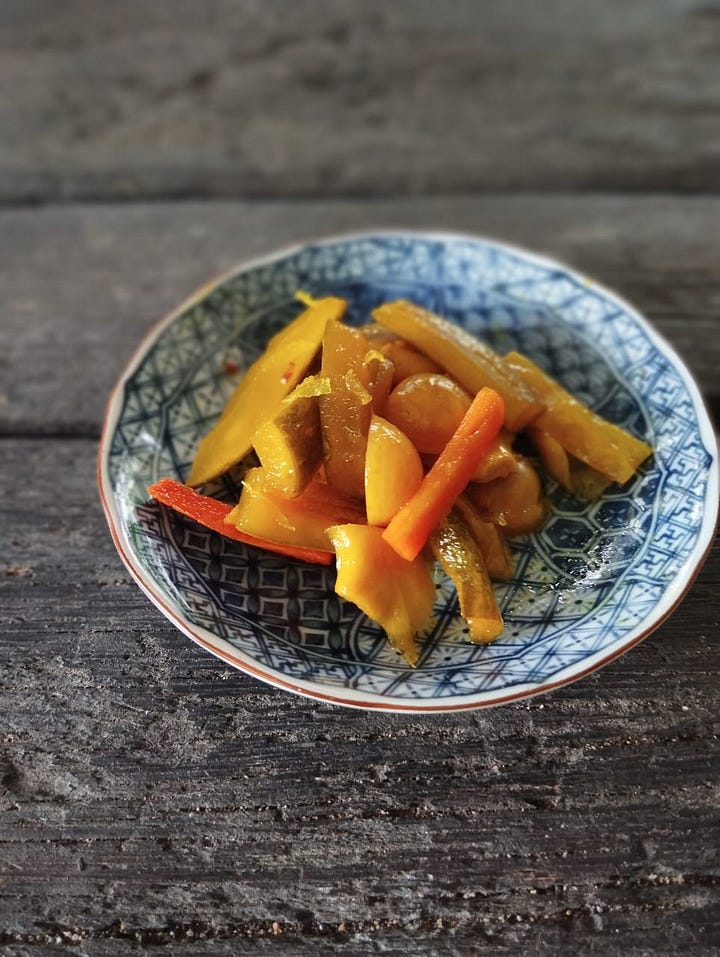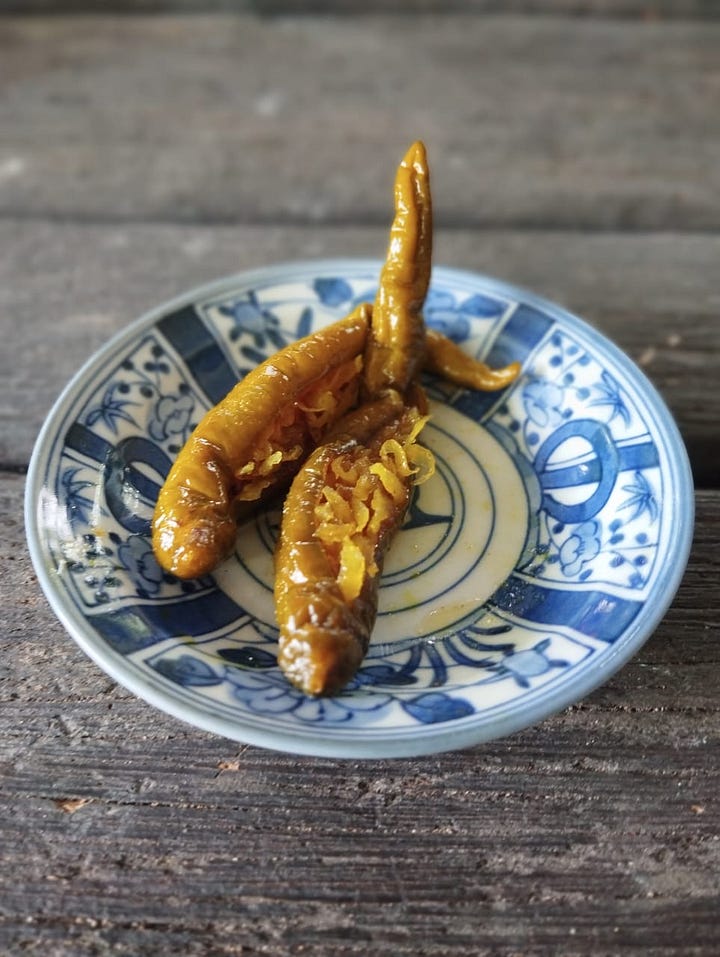
Achars are Asian pickled fruits and or vegetables. The word pickle “derives from Middle Dutch pekel "pickle, brine," or related words in Low German and East Frisian (Dutch pekel, East Frisian päkel, German pökel), which are of uncertain origin”.
“Cucumbers brought from their native India helped begin a tradition of pickling in the Tigris Valley in 2030 BC. Archeologists and anthropologists believe that the ancient Mesopotamians also pickled.”1 By the 16th century pickles were popular in Europe for their antiseptic qualities, many uses of preservation, nutrition and flavour. They also became important commercial goods for trade.
Achars may have been brought to India by the Mughals in the 16th century. The word Achar has two possible etymological roots, the Hindi ächār and the Persian ācār. They are both different - The Indian achar’s (अचार) first written records is in 1563 AD in works by Garcia da Orta, a Portuguese physician who describes a conserve of cashew with salt which he refers to as Āchār. This achar is historically prepared with salt, spices garlic and oil. The Persian achar is a preparation of "powdered or salted meats, pickles, or fruits, preserved in salt, vinegar, honey, or syrup".2
Achars were then distributed throughout the Indian Ocean by Portuguese traders, with recipes additionally influenced by their introduction of chillies, vinegar and the circulation of spices from the Indonesian Spice Islands. Recognisable derivations of the word are found throughout the Indian Ocean, with Sinhalese accā ru, Tamil accāṟu, Dhivehi asaara, Malay acar, Creole French achards, Afrikaans atjar, and Yemeni Arabic ‘ushshār and Japanese acharazuke.
Pickles made by the Eurasian community fall into both these camps the spice paste Indian style - these would include salt fish, mango and preserved mixed fruit pickles in a tangy, curried sauce. These tend to lean a little towards Chutneys, being a little sweeter than the Indian version. See pic at the top
The South East Asian style of achar of crunchy vegetables in a vinegary brine, derives more from a Euro, Persian style, but combined with south east asian herbs and spices like candlenut, turmeric and lemongrass. The Indonesian Atjar has Dutch influence of using more European type vegetables like carrots, cauliflower and cabbage in addition to native cucumbers and shallots. This version is also recognisable as Nyonya style pickles which has the addition of peanuts. Another variation seen in the Eurasian community is green chillies stuffed with shredded green papaya.


Achars eaten as condiments with meals of rice, curry and other side dishes have become a culinary staple in Malaysia across various communities. These differ from pickled vegetables used in the Chinese community which tend to be brined vegetables like mustard greens which are used as ingredients in soups and other dishes.




